Geologic Time
types of geologic time
Relative events are arranged in their order of occurrence (without date)
Ex. in a sequence of flat lying rocks, shale is on top of sandstone. The shale is younger, but how much younger is not known
Absolute the actual age of the geologic event
This is usually done using a radiometric- dating technique
Principle for Relative Geologic Age
Original Horizontality sedimentary rocks are deposited as horizontal layers
– Any marked deviation from horizontality indicates deformation of the crust occurred after deposition of the inclined layer
Law of Superposition: in an ordinary vertical sequence of sedimentary rocks, the layer at the bottom of the sequence is oldest, & successively higher layers are successively younger
Cross-Cutting Relationship Principle Younger features cut older
The Principle of Inclusion if rocks or rock fragments are included within another rock, the rock fragments must be older
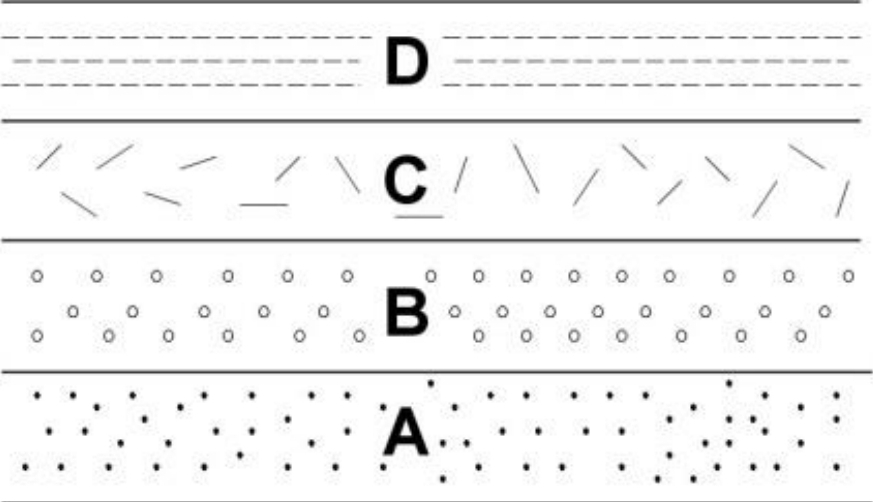
A must have been deposited first (oldest)
D must have been deposited last (youngest)
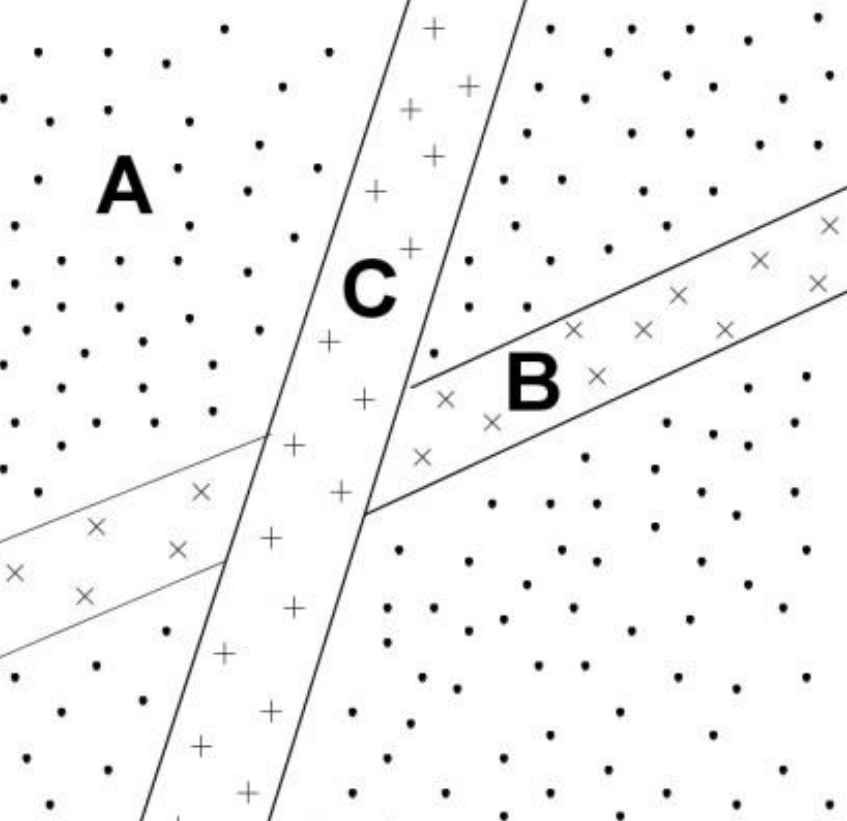
A is the oldest since it is intruded by dikes
B older than dike C since it is cut by dike C
Therefore A followed by dike B & then dike C
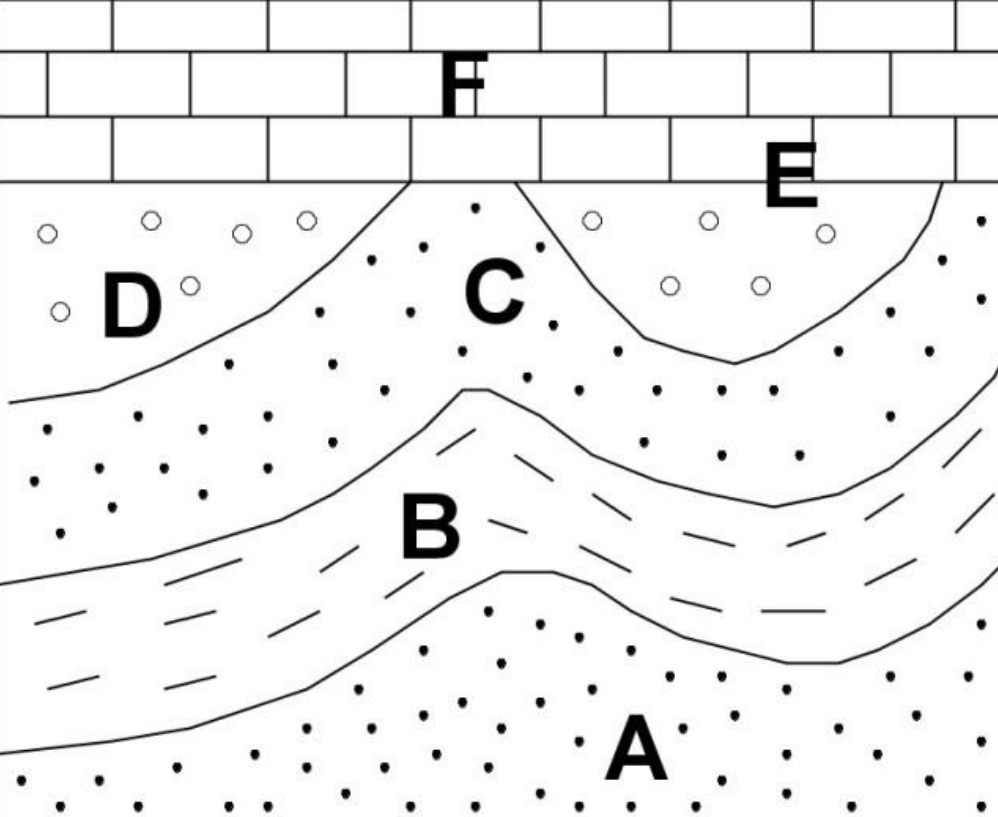
A – D was then folded & subsequently eroded (erosion surface E)
After erosion, F was deposited


(B) Sedimentary beds 1–7 were deposited as horizontal layers. Later, these beds were folded into an anticline. Later still, the anticline was truncated by an erosional unconformity, & finally, an 8 was deposited as a horizontal layer Inclusions of older rock fragments (from 1–7) found at the base of 8
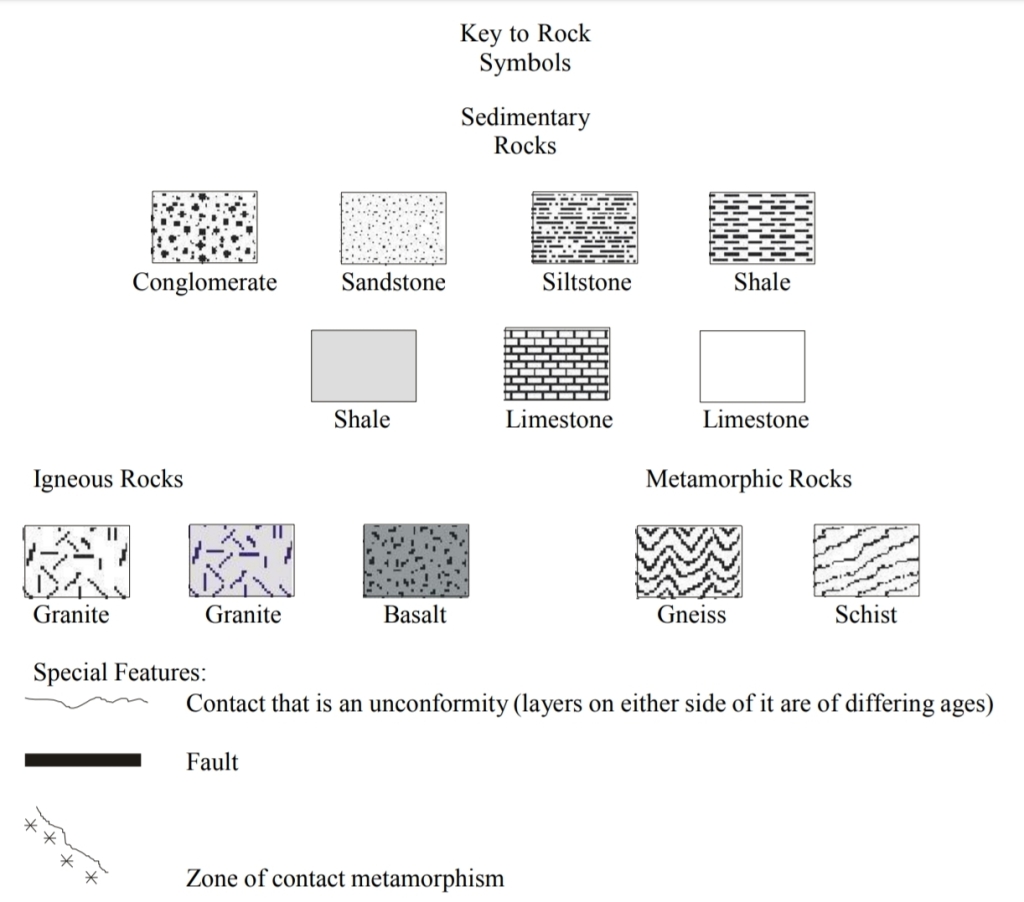
Unconformities
Unconformity is a surface that corresponds with a gap in sedimentation, due to erosion & nondeposition
Rocks above an unconformity are younger than those below it
3 types of unconformities
angular unconformity in which beds above & below the surface aren’t parallel
nonconformity sedimentary layers overly crystalline rocks (igneous or metamorphic)
disconformity in which beds above & below the surface are parallel, but the surface itself is irregular, exhibiting evidence of erosional relief
In geologic block diagrams & cross-sections, unconformities are drawn as wavy line
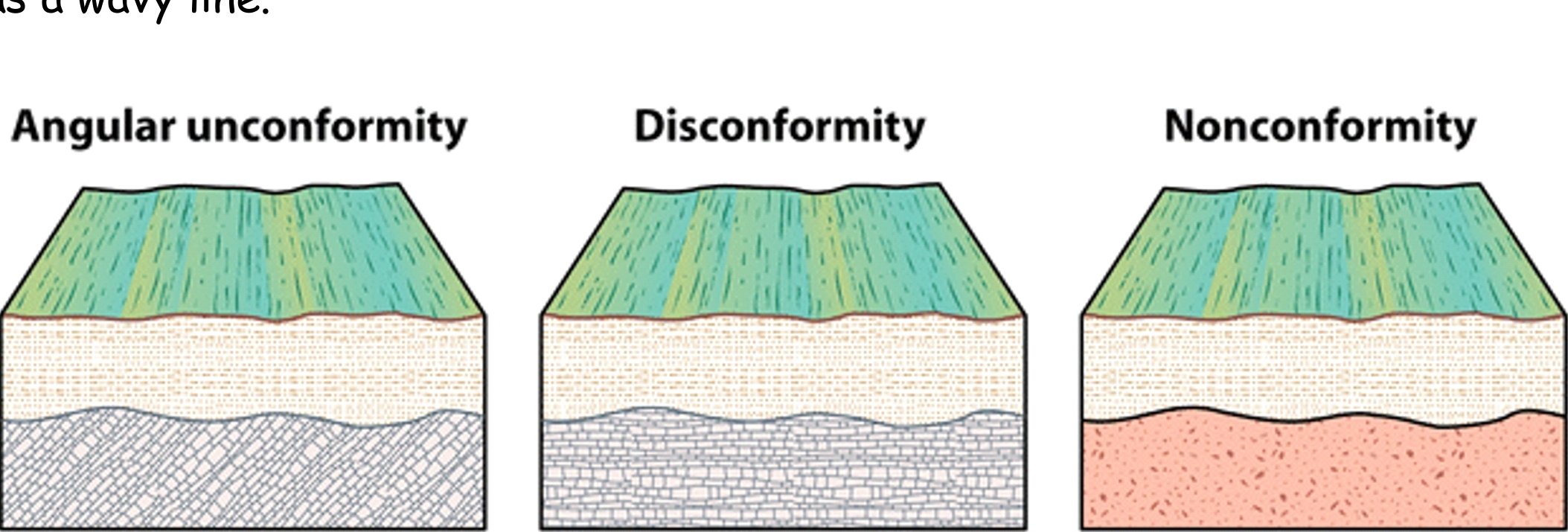
Geologic Time Scale
By correlating outcrops from place to place, & using the Principle of Superposition, it has been possible to determine the sequence in which sedimentary rocks were deposited.
This information, coupled with the fossil record, led to the development of the Geologic Time Scale.
The various subdivisions are based on major changes in the history of the Earth as documented by the geologic record.
The time scale is a relative time scale, & Ages are attached to the various geologic periods using radiometric dating.
that the geologic time scale is based on the sedimentary record while radioactive dating is applied to igneous & metamorphic rocks
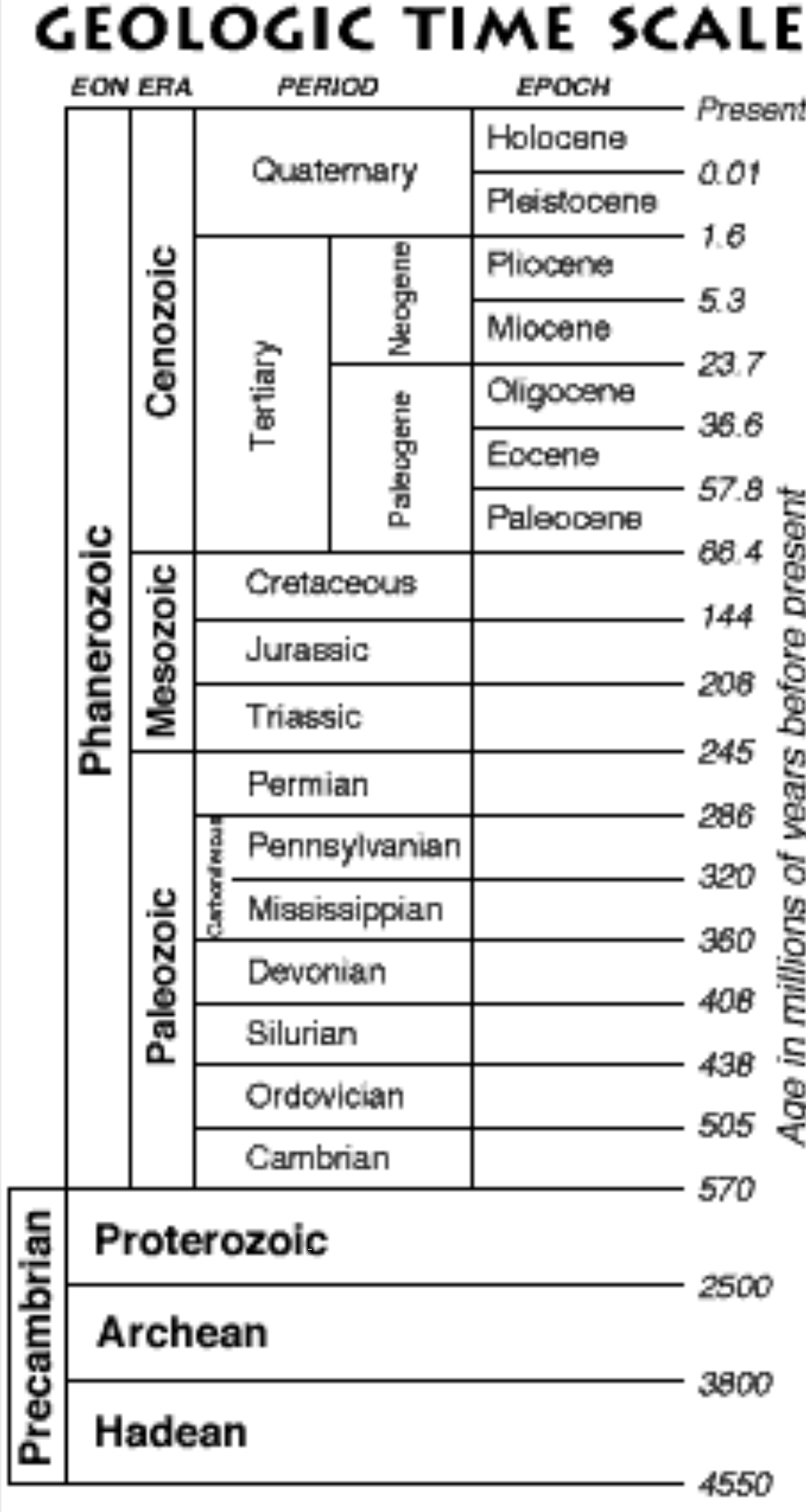
Radiometric Dating
Radioactive decay spontaneous breakdown of a nucleus
The radioactive isotope is the Parent Isotope & the decay product is the Daughter Isotope
half-life of a radioactive element is the length of time it takes for 50% of the parent isotope to decay
The mineral zircon, which contains trace amounts of U but usually no Pb, is often used to determine the age of igneous rocks. The idea is that the zircon grains crystallized from the magma & therefore are the same age as the rock
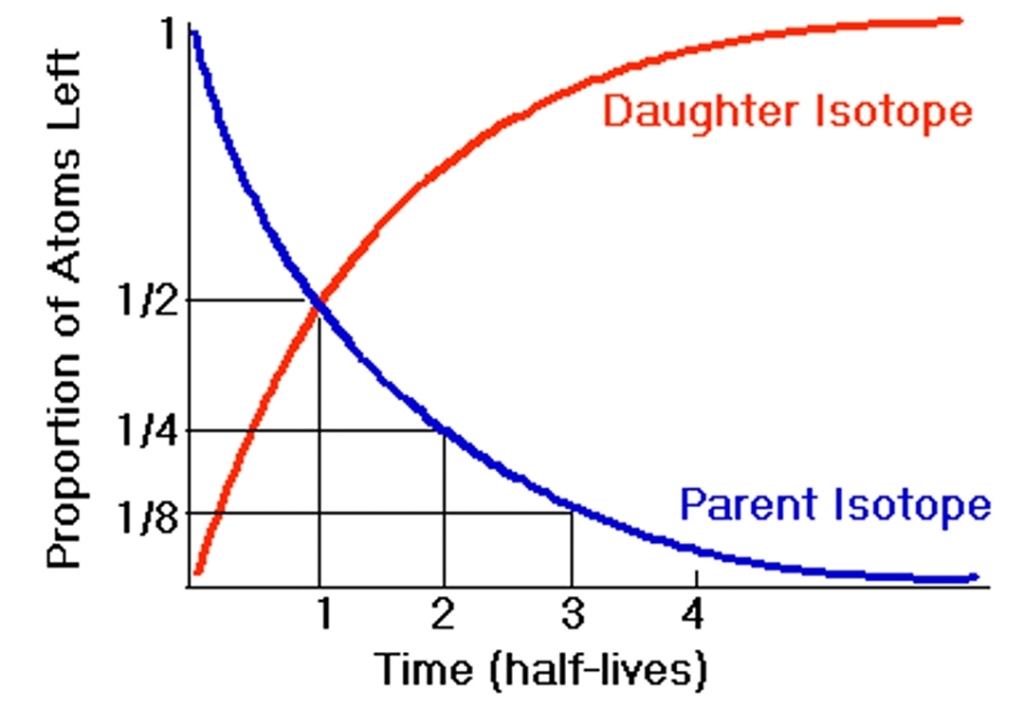



Exercises
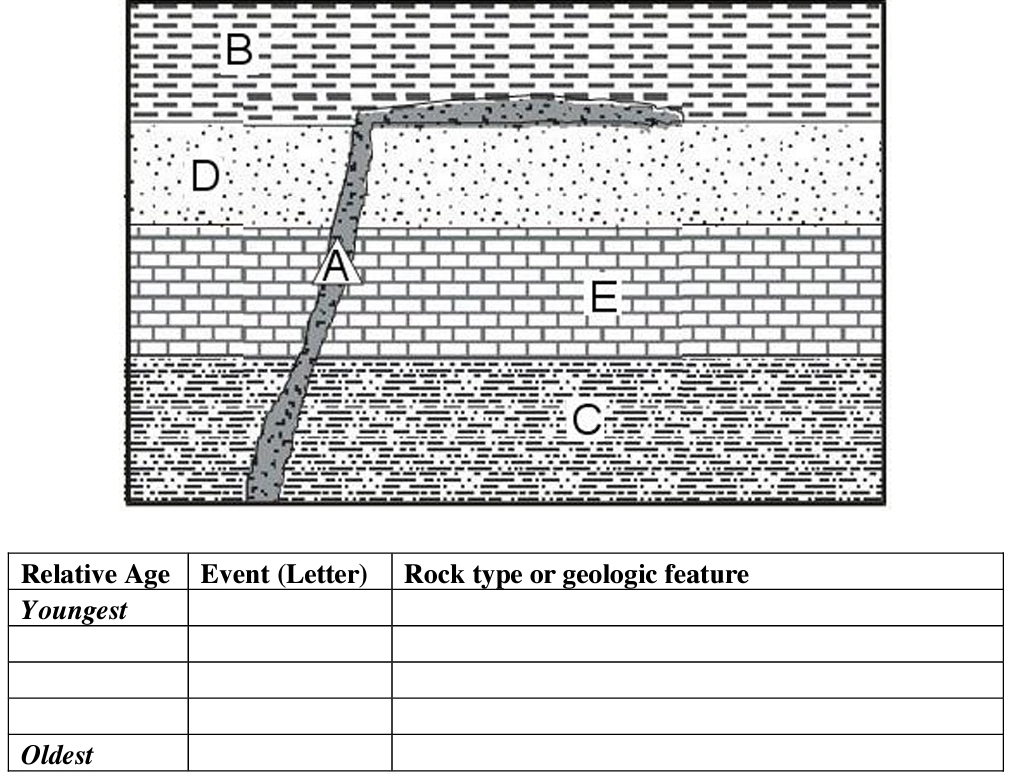
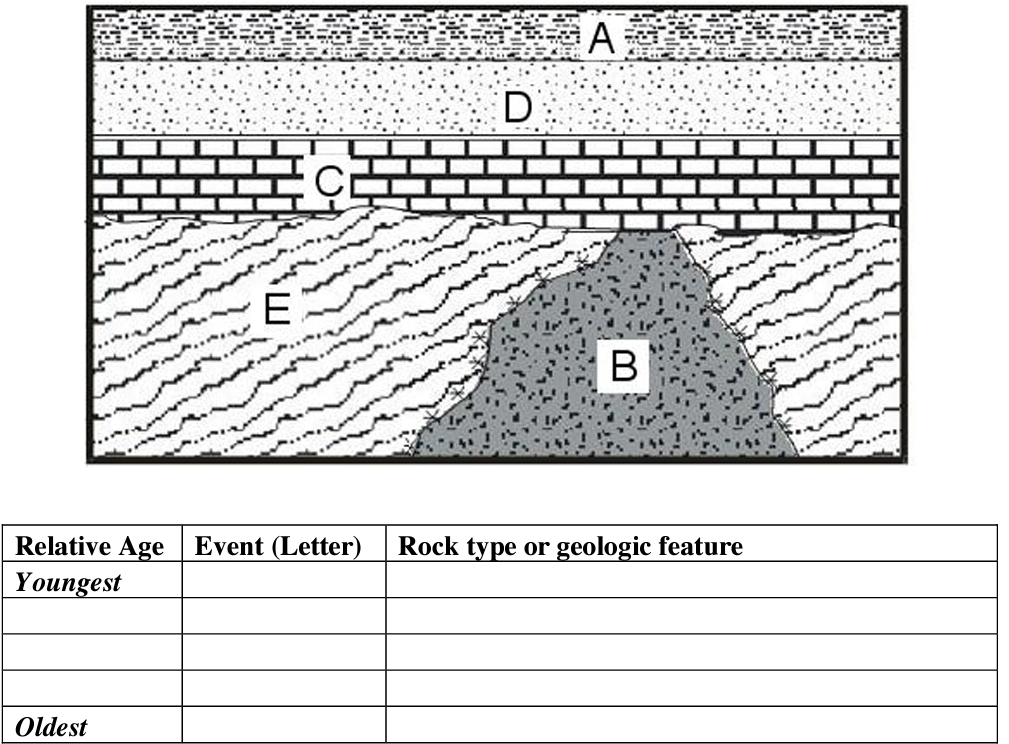
2. between C & E (& B) there is unconformity, What is the name of unconformity?
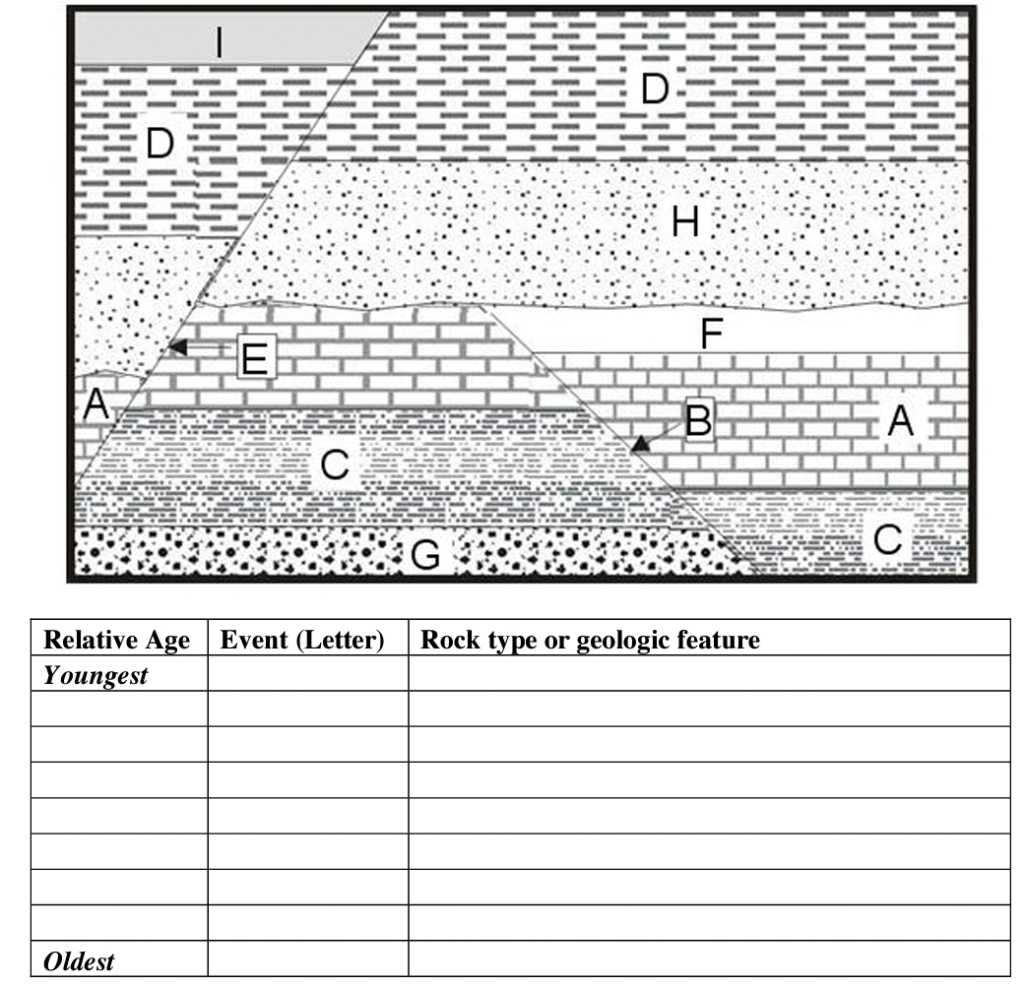
2. between H & A (& F) there is unconformity, What is the name of unconformity?
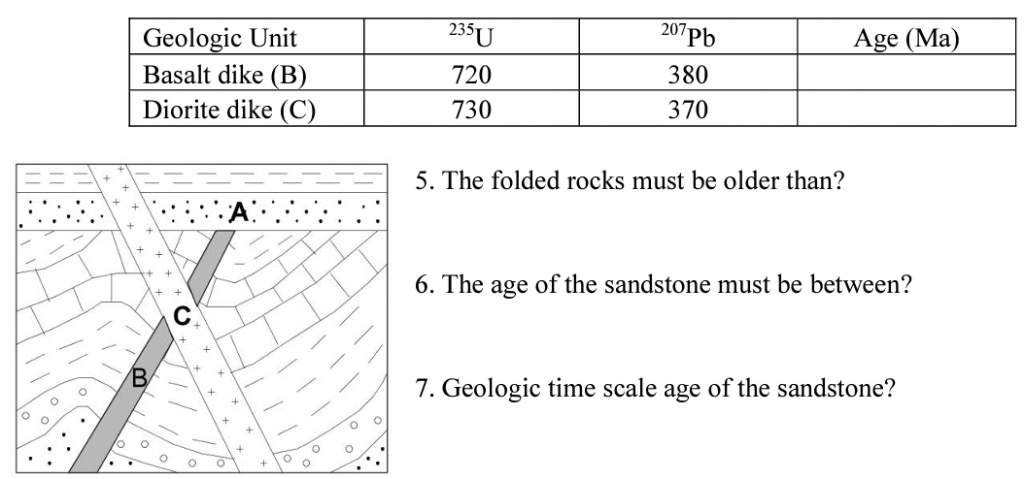
B is a basalt dike (tabular igneous intrusion)
C is a diorite dike (tabular igneous intrusion)
Zircon grains are separated from the basalt dike & the diorite dike & The number of 235U & 207Pb atoms is determined for a zircon from the basalt dike & diorite dike.
The data are shown in the table. Because we want to calculate the age in millions of years, λ = 9.8458 x 10-⁴ my-¹
For each of the following diagrams, label with letters & numbers each layer, body, fault, & unconformity, & then determine the correct order in which the various rock units & other features occurred
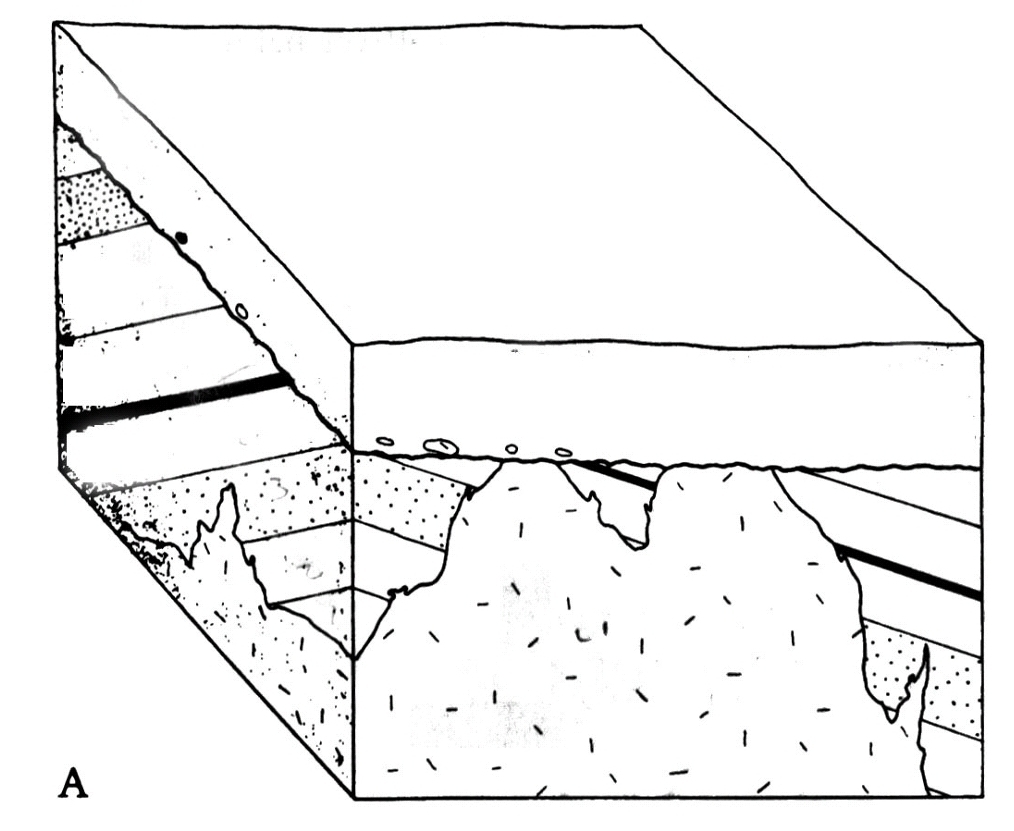
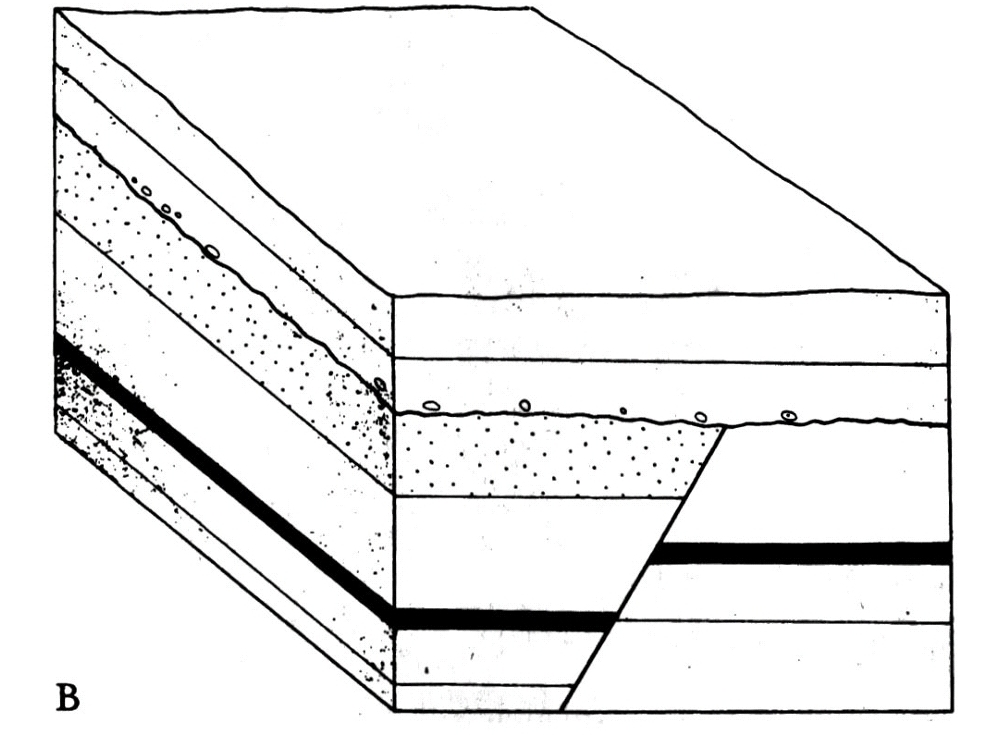
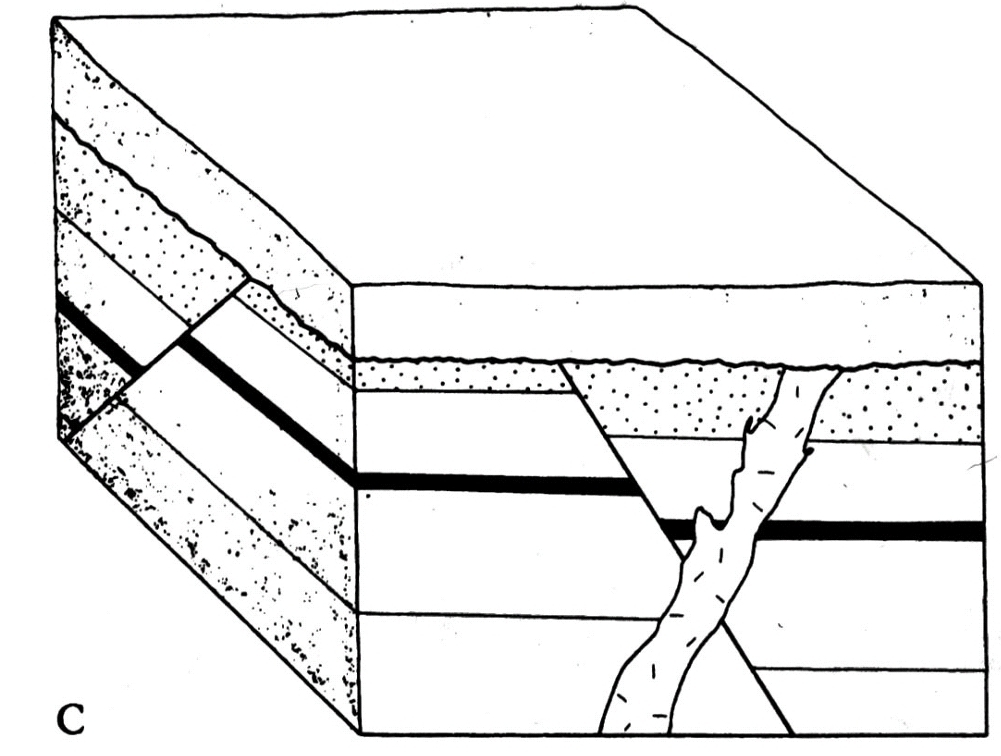
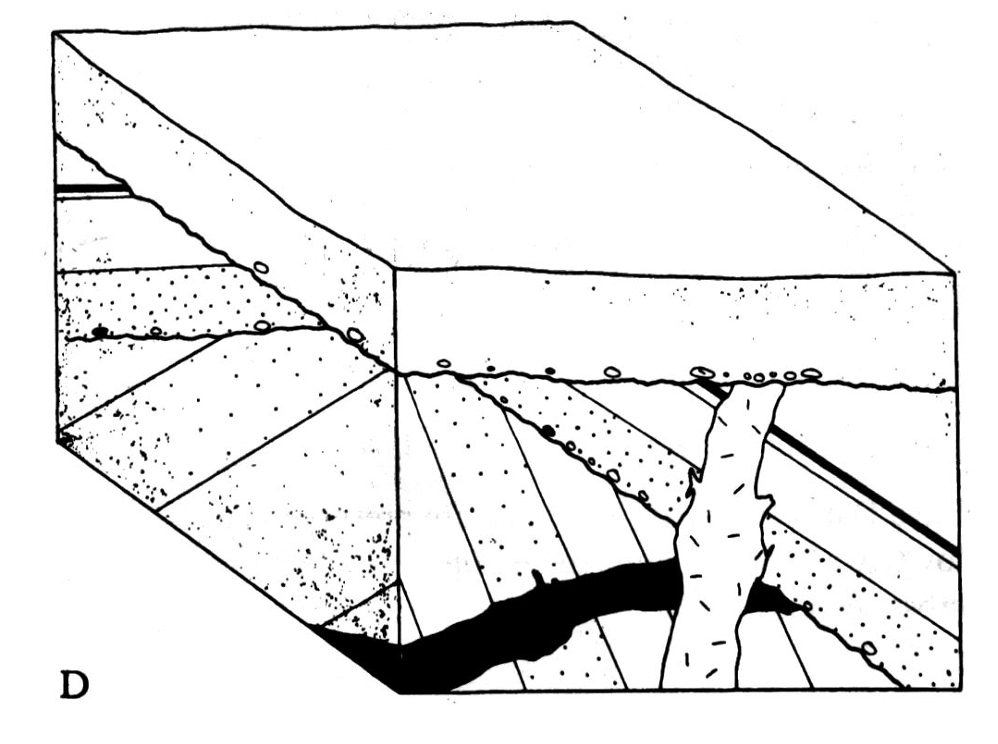
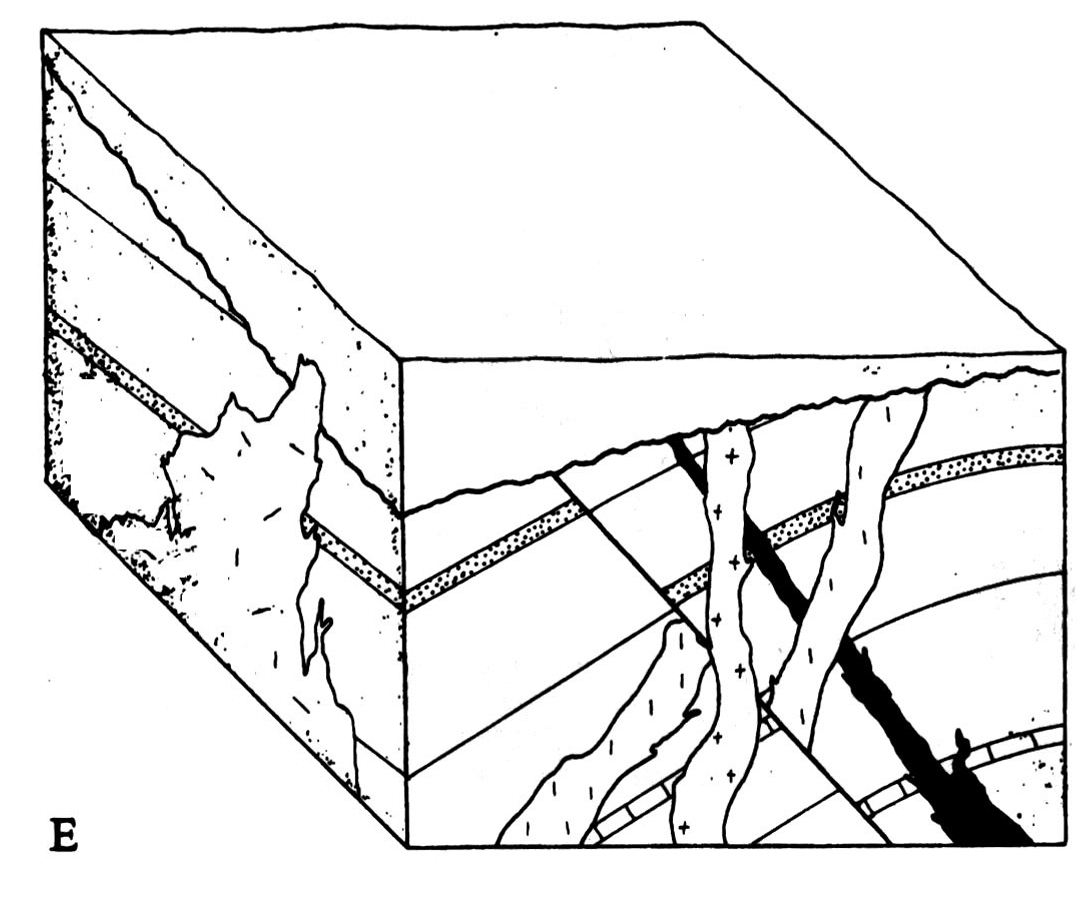
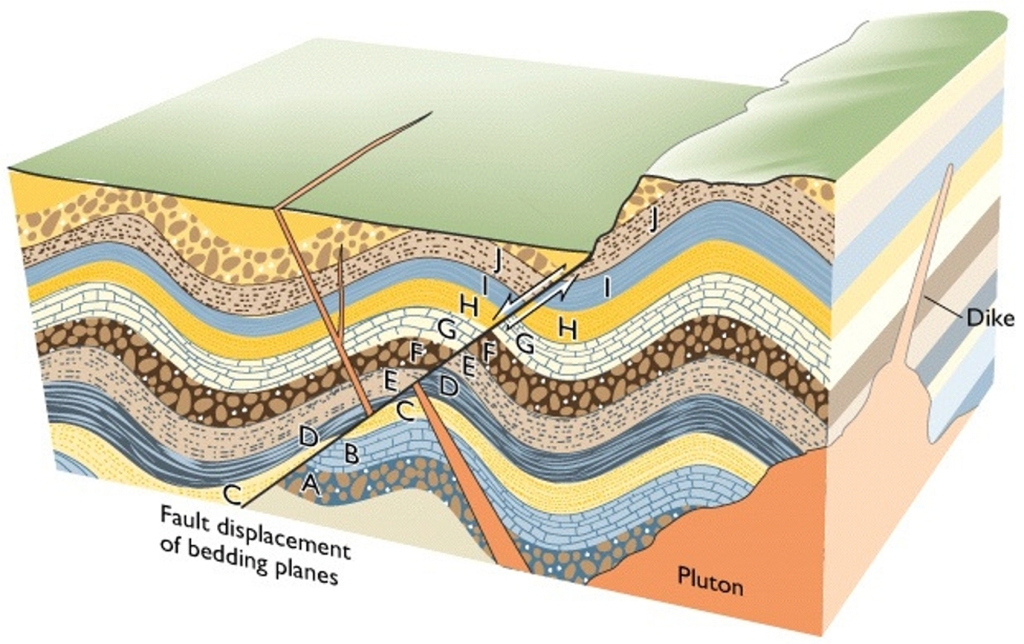
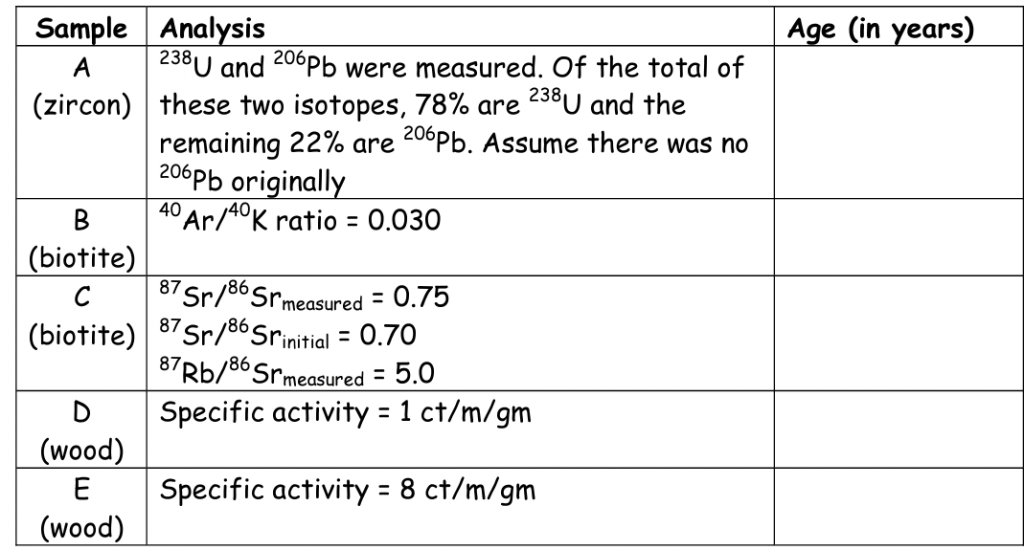

The End
